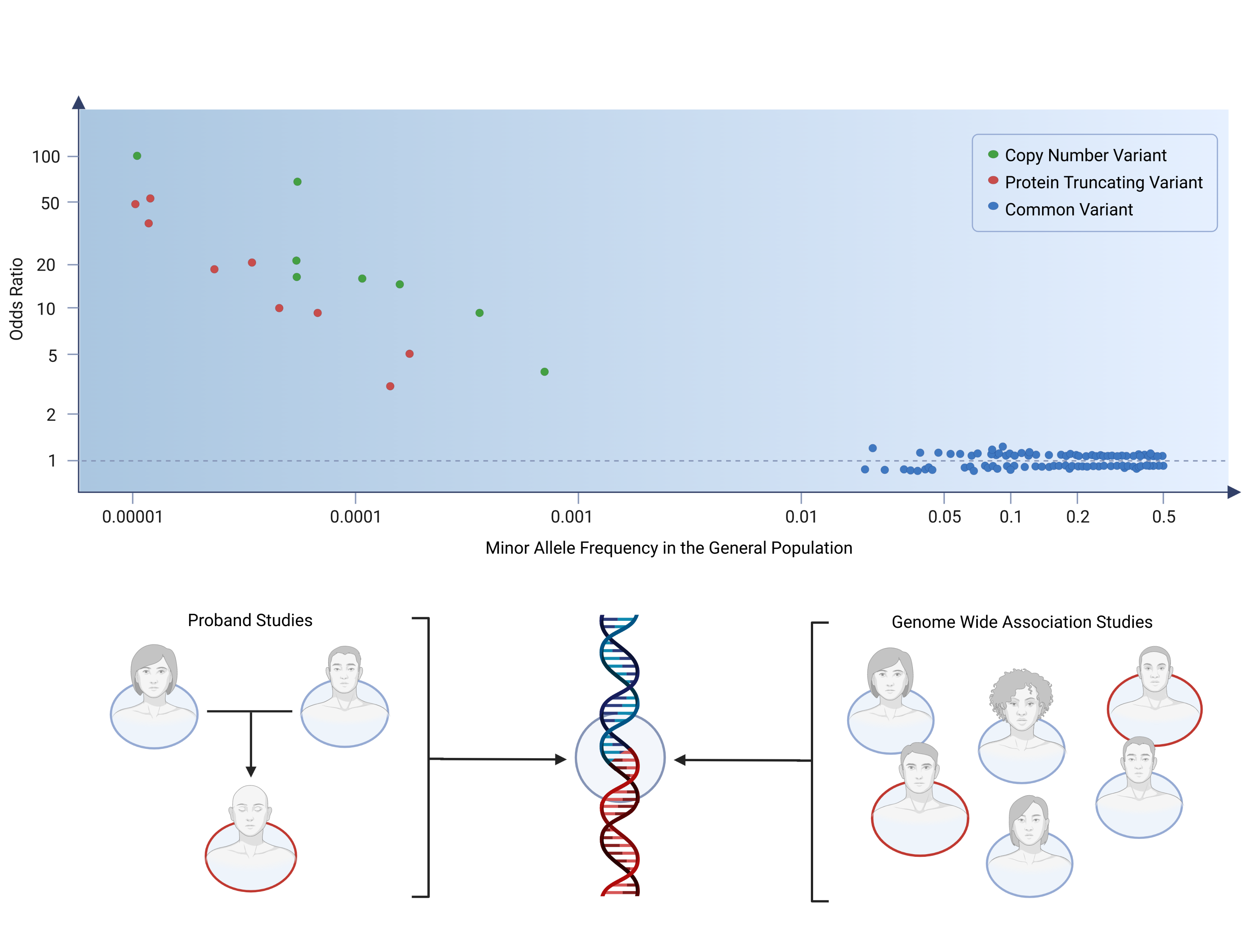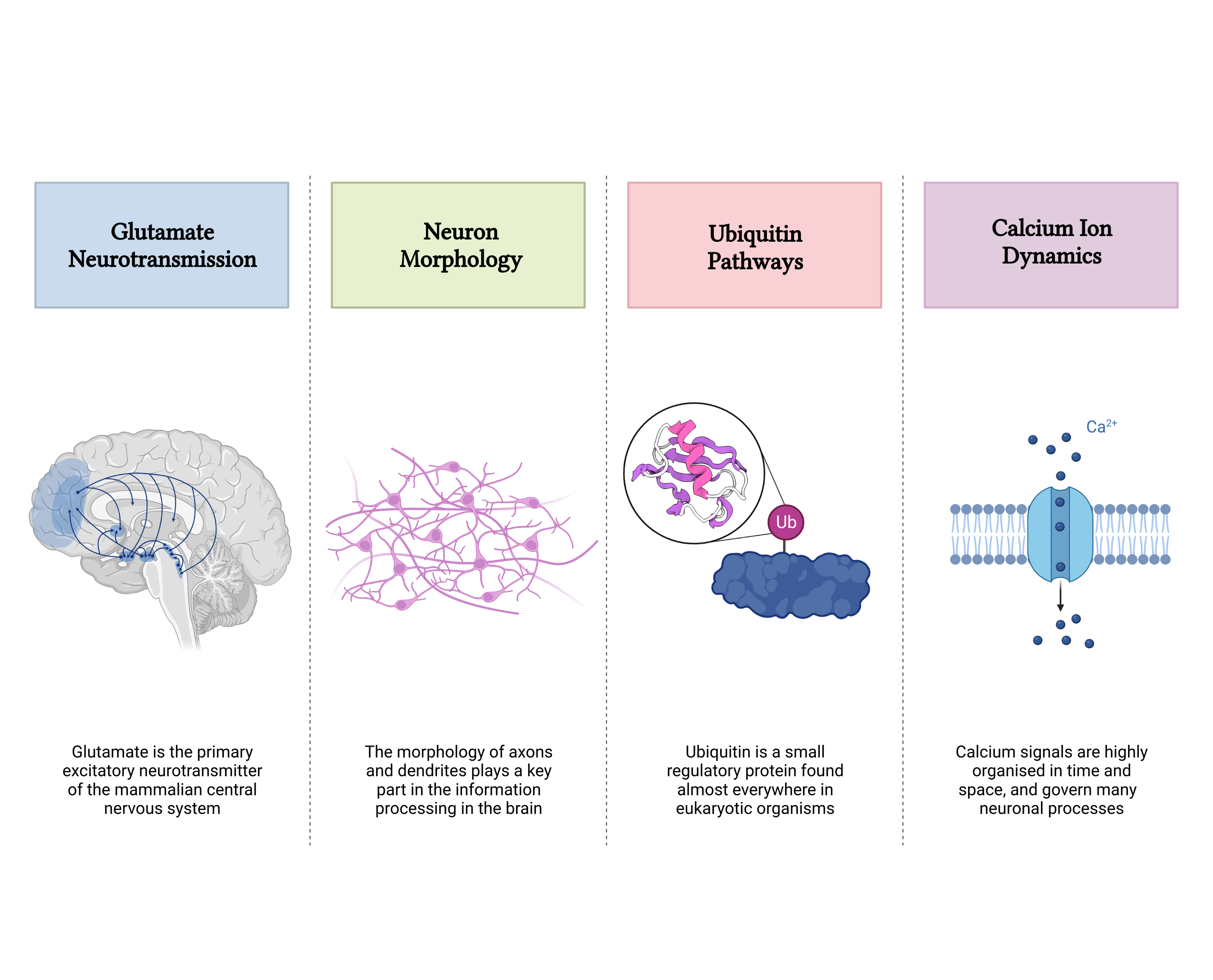Genetic Architecture of Schizophrenia
Welcome to my blog! This summer, I am embarking on an exciting outreach adventure by sharing my PhD research with you. Each week, I will release a new blog post where I unpack a specific aspect of my scientific work. The best part? I will be presenting the information in bite-sized, easily understandable chunks of text! So, whether you are a fellow academic, a curious mind, or simply looking to expand your knowledge, this blog is here to serve you. Throughout the text and in each image you can find links to more detailed sources of information for the topics I discuss here. This week, our focus lies on the genetic architecture of schizophrenia. Let's get started!

Whereas there is clear evidence that external factors play an important role in severe mental disorder, schizophrenia and bipolar disorder have been shown to have a heritability of around 70%. This high level of heritability indicates that genetic variation creates an important biological foundation upon which mental disorders can develop. Modern genetic studies, making use of large patient cohorts and high-throughput screening techniques, have uncovered an extensive and partially overlapping genetic basis for schizophrenia and bipolar disorder, in line with their strong clinical overlap. Despite the impact on life expectancy and quality of life, severe mental disorders have managed to spread widely throughout the general population. The worldwide mean lifetime prevalence of schizophrenia and bipolar disorder has been estimated to be around 1% and 2%, respectively, although large regional differences in prevalence rates have been noted.

Determining the genetic architecture of any polygenic trait, such as schizophrenia and bipolar disorder, involves the testing of allele frequency differences in hundred of thousands of genetic variants across the human genome, in a process known as genome-wide association studies (GWASs). Whereas GWASs can be used to track down several types of sequence variations, such as copy number variations and protein truncating variations, they are most often employed to study common genetic variations, known as single-nucleotide polymorphisms (SNPs), that affect a single base pair in a gene. The statistical association between genetic variants and diseases can be used for a range of downstream applications. For instance, the genetic implication of pro-inflammatory pathways in Crohn’s disease have been used to support and justify clinical trials of drugs targeting these pathways.

Uncovering the underlying biological mechanisms of the genetic variants associated with severe mental disorders, most of which only have a small effect, poses a serious challenge. To create some sense of order in the chaos, my thesis contains an overview of a select amount of genetic sectors consistently implicated in schizophrenia through independent screening techniques. Remarkably, glutamatergic rather than dopamine dysregulation is one of the sectors that is systematically implied in severe mental disorders through genetic screenings. Whereas this overview is not (and cannot possibly be) an exhaustive list of mechanisms involved in severe mental disorders, it aims to provide a solid and conservative foundation for further scientific discussions on the nature of these diseases. In addition, this overview could be used as a list of possible targets for pharmacological interventions.
The content of this blog post reflects my personal opinions and insights and should not be attributed to my employer or investors. The information provided in this post is for educational purposes only and should not be construed as medical advice. It is crucial to consult with medical professionals for any mental or physical healthcare concerns. All images featured in this blog post were created using Biorender.com under an academic license. These blog posts are derived from excerpts of my PhD thesis, based on research conducted at the University of Oslo, which you can also read on this website.
